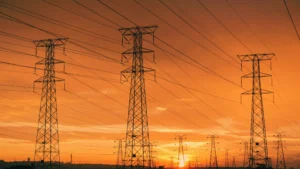Wildfire risk mitigation: An asset perspective
Wildfires have now become the biggest threat to electric utilities in the western United States and Canada.
California was the first state to sign into law regulation requiring all electric utilities to develop and submit Wildfire Mitigation Plans to the California Public Utilities Commission (CPUC) for approval. Coming in response to the increasing frequency and severity of wildfires in California in recent years, which have been linked to utility equipment failures and other factors.
But this is having significant impact on the strategy and operations of utilities far and wide, as utilities in neighboring states watch closely at how they’re reducing wildfire risk to determine how best to follow suit with their own unique challenges.
Blog: How are you making sense of your wildfire data?
Wildfire mitigation planning: frameworks to satisfy regulators
Under Californian regulation, electric utilities are required to identify areas of their service territory where there is a high risk of wildfire, and to develop plans to mitigate that risk. The plans must include measures such as:
– Analyzing and reacting to weather forecast data and key factors that influence the risk of a wildfire, including temperature, humidity levels, winds, and precipitation.
-Reducing the risk of utility equipment igniting a wildfire, such as through equipment upgrades, vegetation management, and other measures.
– Enhancing situational awareness and response capabilities to quickly detect and respond to potential wildfires.
– Coordinating with local emergency response agencies and other stakeholders to ensure a coordinated response to wildfires.
It’s true these elements provide valuable information about the potential risk of wildfires, but they do not provide a complete picture of the risks associated with utilities’ assets. That’s why an added critical element to consider is asset health and risk management.
By monitoring the health of their assets, utilities can find potential problems and take proactive steps to reduce the risk of asset failure and wildfire. The utilities sector is facing increasing scrutiny from regulators and the public and may be held liable for damages caused by wildfires that are traced back to asset mismanagement and their operations.
Asset risk assessment is an essential part of informed decision making for utilities
Assessing asset risk allows utilities to identify assets that are most likely to fail or cause a wildfire and prioritize their maintenance and repair. By taking a data-driven approach to asset risk assessment, utilities can make more informed decisions and distribute their resources more effectively. Next-generation capital investment tools can play a critical role in integrating asset health in wildfire mitigation plans to increase reliability and operations safety.
In the context of wildfires, asset health is crucial because it helps utilities identify assets that are at risk of failure, allowing utilities providers to take measured, proactive steps to reduce the risk of wildfires. An even more robust approach utilities should take when it comes to asset health and risk mitigation, is monitoring the entire lifecycle of asset groups that are interconnected, rather than simply focusing on one asset type, or one element of risk like vegetation management.
By monitoring the health of their assets holistically, utilities can find potential problems before they become a major issue, reducing the risk of asset failure and the likelihood of wildfires.
How do utilities identify asset risk as part of their wildfire strategy?
A utilities risk tolerance is always unique, but two approaches that most want to avoid is letting high risk assets run to failure, and at the other end of the scale, sending maintenance teams to sites unnecessarily, increasing operational expenditure and adding pressure to the workforce. It’s important to be able to identify the assets that are at risk of failure and take proactive steps to mitigate that risk.
One of the key benefits of the Direxyon’s Asset Investment Planning (AIP) software, is how it enables utilities to show assets that are at risk, based on a number of condition modifiers, before they become a major issue. This proactive approach can help to prevent wildfires caused by asset failure, reducing the risk of downtime and improving overall reliability. Ensuring that critical services are available when they are needed most, especially during times of emergency.
In addition to increasing reliability and operations safety, using Direxyon’s suite of tools can also help utilities to reduce costs associated with asset failure. When an asset fails, it can be costly to repair or replace, and there may also be significant costs associated with the resulting wildfire. By taking proactive steps to mitigate the risk of asset failure, utilities can reduce these costs, improving their bottom line and reducing the cost burden on customers.
Mitigating the risk of wildfires: A complex puzzle
There is no silver bullet when it comes to wildfire mitigation and prevention, asset health is just one part of a comprehensive plan. Electric utilities must also consider other factors such as vegetation management, weather monitoring, and emergency response planning. However, by including asset health in their wildfire mitigation plans, utilities can find potential problems before they become a major issue, reducing the risk of asset failure and the likelihood of wildfires, and therefore increasing reliability and operations safety.
Capital planning tools can help utilities to overcome the challenges of monitoring asset health in remote areas and increase reliability and operations safety. By using these tools, utilities can reduce costs associated with asset failure, improve their bottom line, and reduce the cost burden on customers.
Ultimately, including asset health in wildfire mitigation plans is a smart investment that can help utilities to reduce their overall risk profile, protecting their assets, their customers, and the environment.



